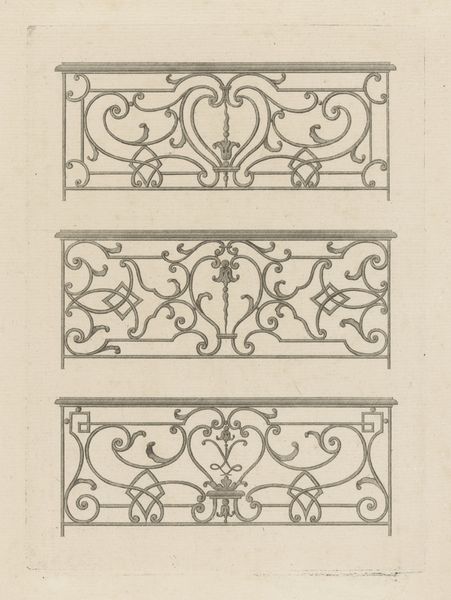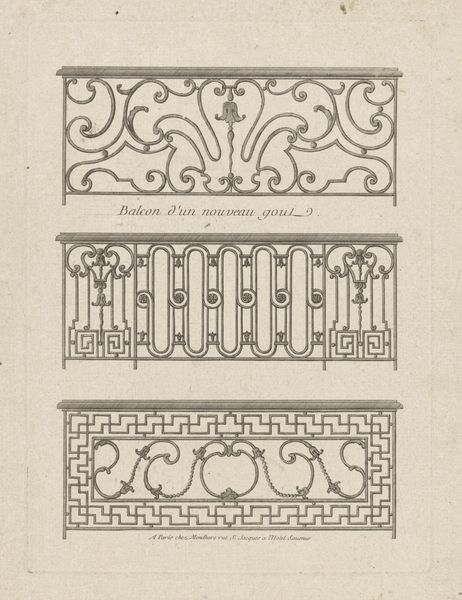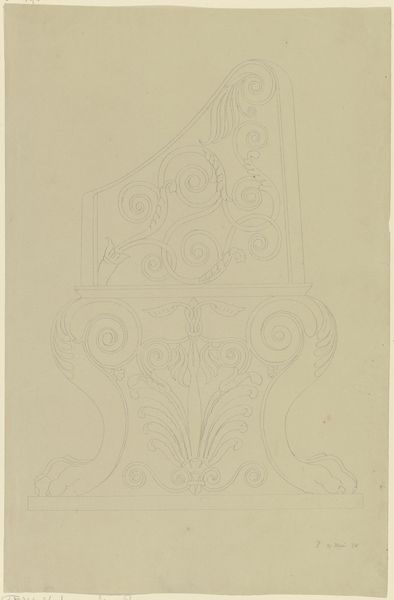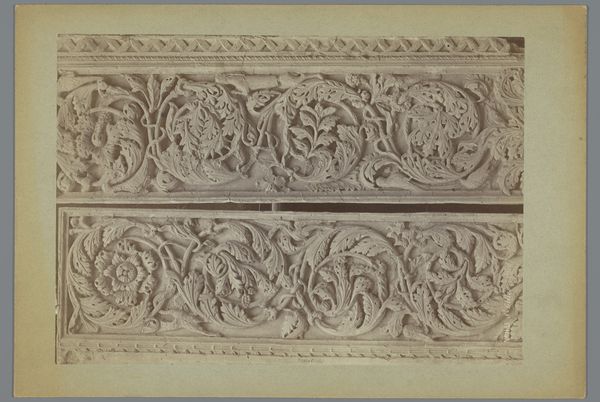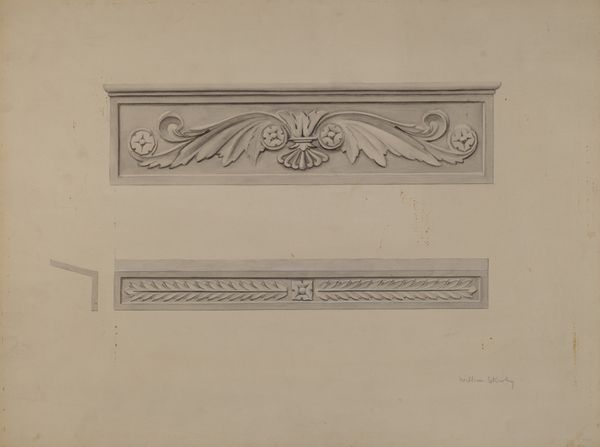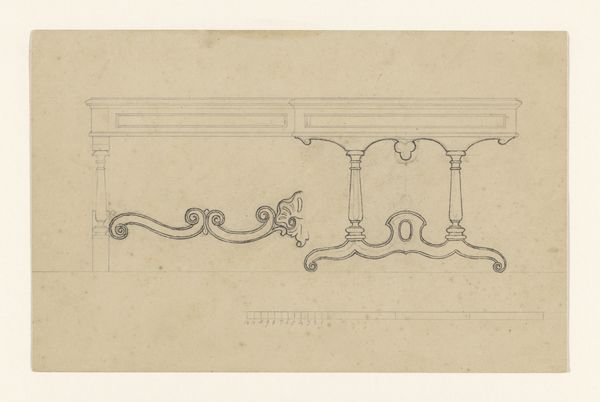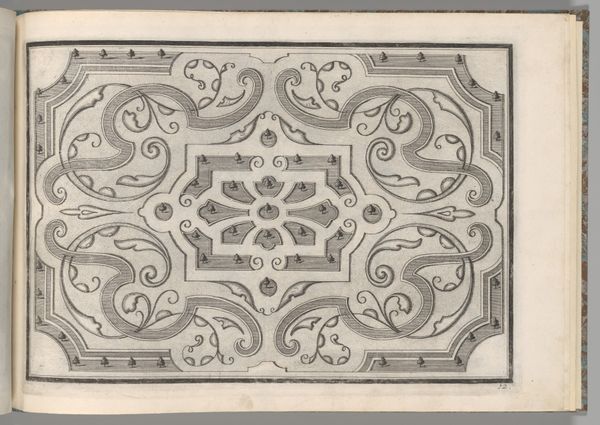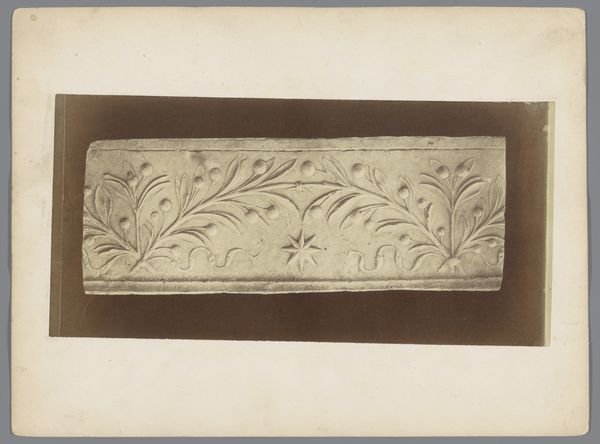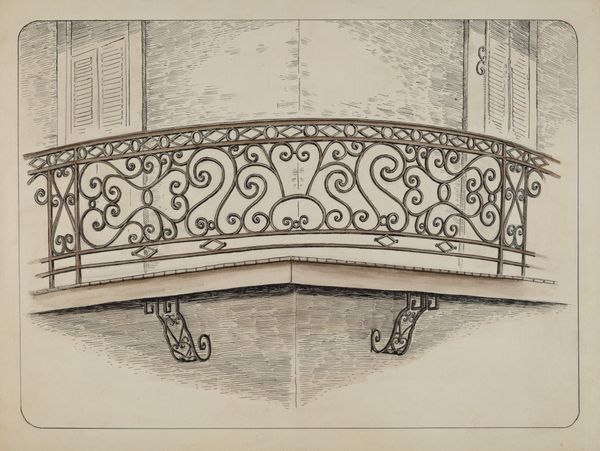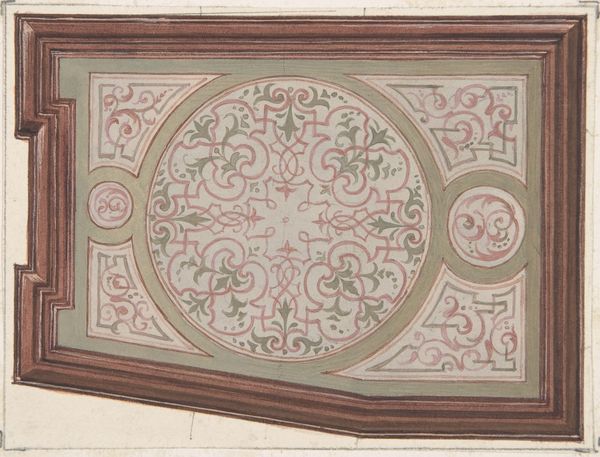
In Relief ausgeführtes vegetabiles Muster am Portal der Sultan-Hassan-Moschee in Kairo 1829 - 1830
0:00
0:00
drawing, ornament, ink, indian-ink
#
drawing
#
ornament
#
16_19th-century
#
decorative element
#
ink
#
german
#
repetitive shape and pattern
#
geometric
#
indian-ink
#
vertical pattern
#
pattern repetition
#
islamic-art
#
decorative-art
Copyright: Public Domain
This is Friedrich Maximilian Hessemer's study of a relief pattern from the Sultan Hassan Mosque in Cairo. This drawing invites us to reflect on the entwined histories of art, religion, and cultural exchange. The patterns are not merely decorative; they represent a profound connection to Islamic artistic traditions, where geometric and vegetal motifs symbolize the infinite and the divine. Hessemer’s attentive recreation highlights the detail, which in turn speaks to the orientalist fascination of the 19th century. During this time, European artists often looked to the “Orient” for inspiration, sometimes exoticizing or misinterpreting the cultures they encountered. Consider how Hessemer, as a European artist, engages with and represents Islamic art. Does he capture the spiritual essence of the original, or does his work reflect a Western gaze? The drawing prompts us to consider the complex dynamics of cultural appropriation and artistic interpretation across different traditions.
Comments
No comments
Be the first to comment and join the conversation on the ultimate creative platform.
